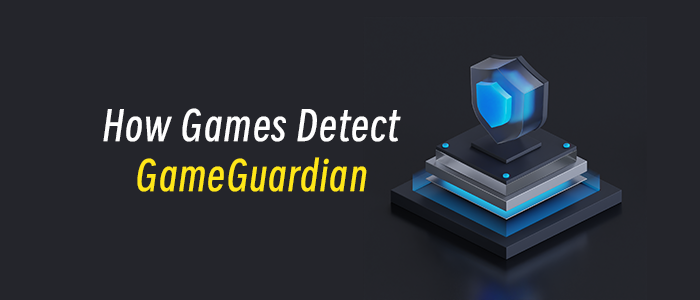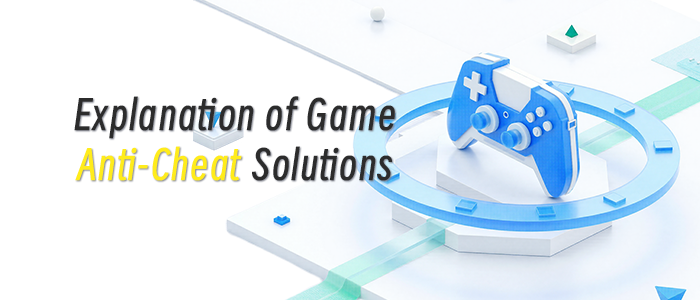
Sigma BF
Key takeaways
- Sigma's BF is a $2,200, 35mm full-frame, mirrorless digital camera that radically changes the mode of operation by replacing the gaggle of buttons with an elegant click-wheel.
- It's a great first camera but also has tons of pro features
- A future upgrade to a higher-resolution 60-megapixel sensor would be a welcome enhancement.
Taking pictures with a digital camera hasn't changed much in thirty years. The electronics have improved, but the basic act of operating a digital camera has remained mostly the same. Cameras are a gaggle of buttons that are a cryptic arrangement to anyone but the initiated.
The real innovation in the picture-taking experience has been the smartphone, which has made picture-taking an always-available tool for documenting everything with relative ease.
There is still an audience, however, for innovation beyond what smartphones offer. Young consumers keep buying digital cameras, and a new generation is always interested to learn more about photography as an art.
Also: The best vlogging cameras of 2025: Expert tested and reviewed
Into the void steps lens and camera maker Sigma Corp., based in Kanagawa, Japan, just outside Tokyo. The company this spring introduced a radical redesign of the digital camera's basic mode of use.
The Sigma BF , as it's called, reduces the mass of buttons to a small set of touch-sensitive controls. All the functions of digital photography are still there to be experimented with and exploited -- shutter speed, lens aperture, or "f-stop," and "ISO," the level of light that can be recovered from a scene -- but they are under your command in a radically simplified user interface.
I've been testing the BF for some weeks now, and I'm smitten with the changes. The hardware's design is beautiful, and the new user interface is very thoughtful. The name "BF" stands for "beautiful foolishness," and you could say this kind of redesign is crazy, but I love it.
RECOMMENDS
Sigma BF
A mirrorless digital camera that radically changes the mode of operation by replacing the gaggle of buttons with an elegant click wheel.
A camera for a new age of photographers
Sigma, a sixty-three-year-old company, makes most of its money from lenses for all camera brands. As a result, its cameras have tended to be somewhat experimental, never selling in the same volume as Sony, Canon, or Nikon. That means that the company takes chances. Often, the results are wild and beautiful.
The BF is really meant for a new age of prosumers who want to up their game in photography. At a retail price of $2,199, the price is not insignificant, but it is on the low end for what you'd pay for a very good 35mm digital camera these days. Lenses, which have to be bought separately, run from about $600 for a fixed focal length "prime" lens to $1,300 or more for zoom lenses. The BF uses what's called an "L-mount," which means you're not limited to Sigma's lenses; it's also compatible with lenses from Leica, Panasonic, Samyang, and Sirui.
Also: Eufy's latest security camera has AI-powered color night vision - and no monthly fees
The premise of stepping up your game from the smartphone camera is pretty simple, to my mind: You will never, ever, get as good a picture with any smartphone camera as you will with a camera that has a real lens. The lens is the key. The optics are just so superior to the optics on a smartphone.
I tested the BF with a 50mm prime lens from Sigma, the same kind I already use for most of my photography.
No matter what you are photographing, there are immediate benefits to using a real camera versus a smartphone camera.
One benefit is the detail you get. Here's a picture of a butterfly landing on some vegetation in a vivarium. When cropping the image to see the butterfly up close, you'll get a level of detail that is clean rather than the murky detail you get even with a smartphone's optical zoom:
Sigma BF, 50mm, f/2, 1/800s, ISO 640
(None of these photos have been edited. They are all straight out of the camera. In some cases, the file size has been compressed to accommodate the publishing system.)
Not only detail but also control of the depth of field via the aperture dial on the lens provides control over the selective blurring of objects, the "bokeh."
Smartphones will give you fake bokeh that is generated in software rather than the actual bending of the light via the lens elements. Rarely will fake bokeh give you a really complex, thrilling effect where both foreground and background elements are selectively blurred, leading to a more sophisticated image, such as this cypress I snapped in New York's Central Park:
Sigma BF, 50mm, f/3.2, 1/640s, ISO 160
And even when fake bokeh works, I don't think you'll achieve the almost holographic, floating beauty you get with a real lens while preserving all the detail of the foreground subject, as with this thistle:
Sigma BF, 50mm, f/2, 1/640s, ISO 250
The second advantage is that a real lens will give you more real proportions than a smartphone lens that has a lot of barrel distortion. Like a building architectural shot or this bank vault:
Sigma BF, 50mm, f/5.6, 1/640s, ISO 200
Sigma BF, 50mm, f/5, 1/640s, ISO 100
You can get a nice, crisp skyline shot at twilight as the light changes:
Sigma BF, 50mm, f/13, 1/640s, ISO 10000
Sigma BF, 50mm, f/2, 1/640s, ISO 32000
A swing to simplicity
Where the BF departs from other cameras is in the simplicity of design and user interface.
The hardware is, very simply, a solid shell milled from a block of aluminum and then filled with electronics. It's a gorgeous manufactured object with a super solid feel. (Sigma cameras always feel super solid, but this is on a new level.)
The BF's body is one of the lightest full-frame mirrorless cameras on the market, at just under a pound, compared to devices such as the Sony a7 IV, which weighs nearly a pound and a half.
For non-camera users, the weight of any real camera is something of a surprise compared to a smartphone such as an Apple iPhone Pro, which weighs half a pound. Holding 15 ounces worth of an unfamiliar object prompted some people to whom I handed the BF to remark, "It's so heavy!"
Also: First look at iPhone 17 Pro? Public images seemingly confirm big design and camera changes
The total weight of the camera is the combination of the 15 ounces and the 12 ounces of the 50mm Sigma lens. That kind of heft is typical of full-frame lenses because they have a lot of glass inside them. (And this particular Sigma lens is not very heavy as 50-millimeter lenses go.)
The real adjustment for a novice photographer is getting used to the balance of weight between camera and lens versus carrying a slab of a smartphone with uniform weight distribution.
The camera comes in two finishes, a striking silver color and a deep black. I chose to try the black as I like to use the camera often in discreet settings such as a jazz club, so I wanted something less flashy than the silver.
The sensor is a full-frame, 35mm Sony chip with just under 25 megapixels, less than the 60 megapixels in some 35mm cameras. Despite a lower pixel count, I found the sensor produced rich detail, certainly enough for Instagram pictures and possibly good enough for wall-sized prints depending on the exposure. Sony is a very reliable name for sensors, so it makes sense for Sigma to go with the market leader.
Images are stored in the internal 230-gigabyte flash memory, which I found to be more than enough for my purposes. I usually offloaded the pictures onto my iPad or MacBook after each photo-taking session via USB-C and then cleared the BF's memory.
Also: Why the best fix for headless server frustration might be a little box named Comet
On the software side, the radical simplification of the user interface is striking -- it's even something of a revelation.
I've been a user of Sigma cameras for over a decade, my main camera these days being the Sigma fp-L, a 60-megapixel model introduced a couple of years ago. I love that camera, but I would be very happy to see the changes in the BF user interface become standard on Sigma cameras going forward.
The main innovation is removing a lot of shooting information from the LCD screen. Instead of seeing the aperture or shutter speed and other settings constantly on the display, each setting on the BF occupies a separate, tiny LCD -- it's called a "status monitor" though I tend to think of it as simply a "mini-LCD" -- to the right of the main display.
A click wheel just below the mini-LCD, formally called the "dial pad," reminiscent of the first Apple iPod's click wheel, lets you rotate through the values of shutter speed, etc. The changing values are displayed on the mini-LCD as you do so, and you click the center button of the click wheel to select the setting you want.
There's also a touch-sensitive playback button, so you can peek at what you just snapped with a soft touch, and a touch-sensitive menu button, which is a quick way to peek at the camera's settings. And a power button at the bottom of all this, of course.
The effect is that the main display screen is a pristine window into what you're capturing in the real world, while the mini-LCD and the click-wheel are your controls. It's a nice division that elegantly separates the gaze from the adjustments.
The main LCD is a 2.1 megapixel model and is terrifically responsive for things such as selecting the focus area by tapping with your finger, or using pinch and swipe when looking through the photos you've taken.
Also: Stanford's holographic AI glasses are coming for your clunky VR headset
If you half-press the shutter button, the display momentarily shows the key settings before you fully commit to the shutter release. If you press on the center button of the click-wheel, or dial pad, extra settings come up for the function that's in focus, such as shutter speed.
Street photography delight
The BF's light weight and simplified user interface made for nice street photography, one of my favorite pastimes.
I tended to carry the camera at my waist in one hand, holding onto the lens, sometimes with the camera body flipped upside-down, with my pinky finger on the shutter button. That way, I achieved a kind of nonchalant pose that did not draw attention to my picture-taking.
Also: I used Google's photo-to-video AI tool on my selfie - and it made me do the tango
Sometimes, I looked at the LCD to see what I was snapping, but oftentimes, I just took a picture in the general direction to see what chance would produce.
Sigma BF, 50mm, f/2, 1/640s, ISO 500
Sigma BF, 50mm, f/2, 1/640s, ISO 1000
Sigma BF, 50mm, f/5.6, 1/640s, ISO 5000
Sigma BF, 50mm, f/2, 1/250s, ISO 250
The autofocus function of the BF was super fast, notably faster than the response time of the fp-L, probably because of the BF's lower-megapixel-count sensor. That made for excellent motion capture, such as this basketball game:
Sigma BF, 50mm, f/2.5, 1/640s, ISO 100
One of the BF's shortcomings is having an electronic shutter: Instead of mechanical blades opening and closing, the sensor chip controls in software when the exposure happens. The common knock against an electronic shutter is that it can lead to blurring of fast motion. In the case of the basketball game, in late afternoon daylight, I saw no issue.
Another potential drawback is that indoors, in artificial light, the electronic shutter can produce dark bands across the image if the shutter speed is too fast. That can require you to take the picture at a slower shutter speed. In practice, I found it not to be much of a problem.
Improved electronics
In addition to autofocus speed, Sigma has done a very good job with the BF's low-light support, which was already quite good on the fp-L.
One of my favorite low-light picture tests is a diorama in the North American mammals hall of the American Museum of Natural History in Manhattan. This is one of the darkest exhibits in the museum, and it's challenging to photograph if you don't have the camera resting on a tripod to allow for a long exposure.

























